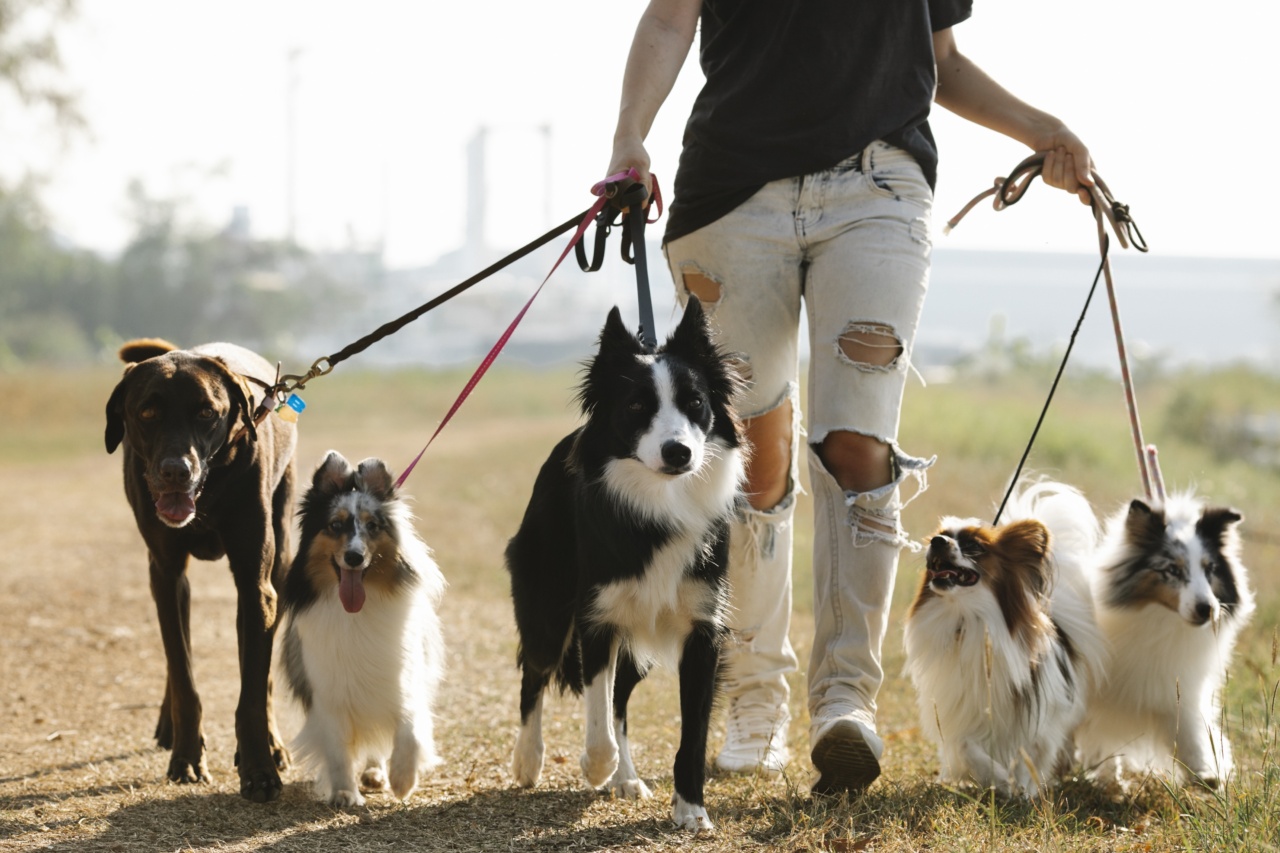Encountering a strange dog can be a scary experience. When confronted with an unknown dog, it’s natural to feel nervous or anxious. Knowing how to approach a strange dog can help reduce anxiety and prevent any possible dangers.
Below are some tips on the proper way to approach a strange dog.
1. Assess the Situation
Before approaching a strange dog, assess the situation. Look to see if the dog appears anxious, aggressive, or frightened. If any of these signs are present, it’s best to avoid approaching the dog.
If the dog appears friendly and relaxed, you may proceed to the next step.
2. Ask for Permission
Even though a dog appears friendly, it’s always important to ask for permission before approaching. If the dog has an owner present, ask the owner if it’s okay to approach the dog.
If there is no owner present, approach the dog slowly and calmly while speaking in a soothing tone. If the dog shows signs of aggression or barking, avoid approaching the dog.
3. Approach Slowly
When approaching a strange dog, it’s important to approach slowly. Sudden movements or loud noises can startle the dog and lead to a negative reaction. Approach the dog from the side, and avoid making direct eye contact.
Slowly extend your hand towards the dog for it to sniff and smell you.
4. Avoid Touching the Head or Face
When greeting a strange dog, avoid touching its head or face. Many dogs perceive this as a sign of aggression. Instead, scratch the dog gently on its chest or side. If the dog leans in or seems comfortable, you can pet the dog cautiously.
5. Know When to Back Off
If the dog begins to show any signs of aggression or fear, it’s important to back off immediately. If the dog starts to move towards you, slowly step backward while avoiding direct eye contact. Give the dog plenty of space to retreat if it wishes.
6. Respect the Dog’s Personal Space
Just like humans, dogs have personal boundaries. It’s important to respect a dog’s personal space. Never approach a dog that is eating, sleeping, or caring for its puppies. These situations can make a dog feel vulnerable and can lead to aggression.
7. Be Calm and Confident
Dogs can sense our emotions. If you are anxious or nervous, the dog may pick up on this and feel uneasy. Instead, approach the dog in a calm and confident manner. Dogs respond well to confident body language.
Avoid making sudden movements, and speak in a soothing tone of voice.
8. Leave Treats Alone
Many people believe that giving a dog a treat is a good way to make friends. However, giving a strange dog a treat can be dangerous. It’s best to leave treats alone unless the owner is present and approves the treat.
Feeding a dog without the owner’s permission can cause stomach upset or even harm the dog.
9. Don’t Run
If you encounter a dog that is aggressive or displays aggressive behavior, running is not the answer. Running can trigger the dog’s hunting instinct and activate its prey drive. Instead, remain calm and speak in a confident voice.
Slowly back away and avoid eye contact. If the dog continues to pursue you, yell for help and try to get to a safe place as quickly as possible.
10. Train Your Own Dog Properly
While it’s important to know how to approach a strange dog, it’s equally important to train your own dog properly. Training your dog can help prevent aggressive or fearful behavior.
Start training your dog at an early age and use positive reinforcement methods. Socialize your dog to help expose it to new situations and experiences.
Conclusion
In conclusion, approaching a strange dog requires patience, caution, and respect. Always assess the situation before approaching. Ask for permission when the owner is present and approach slowly while speaking in a soothing tone.
Avoid direct eye contact and touching the head or face. Know when to back off and respect the dog’s personal space. Be calm and confident and never run away from an aggressive dog. Finally, take the time to train your own dog to prevent aggressive behavior.































